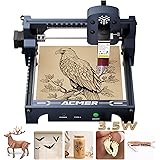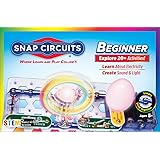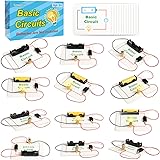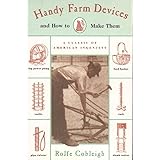Unlock Your Inner Crafter: Mastering Top DIY Projects for Stunning Home Decor
Do you ever look at beautiful home decor pieces and wish you could create them yourself, without breaking the bank? The video above showcases five incredible **DIY crafts** that are not only achievable but also incredibly rewarding. From transforming simple wood planks into charming signs to upcycling thrift store finds, these **step-by-step tutorials** make crafting accessible for everyone. Let’s dive deeper into these creative projects, expanding on the techniques and offering insights to help you master each one.
1. Crafting a Chic Farmhouse “EAT” Sign: A Beginner-Friendly Wood Project
Firstly, the video demonstrates how to craft a striking “EAT” sign, perfect for any kitchen or dining room. This project begins with an affordable wood plank, often found at stores like Dollar Tree, providing an excellent base for your creative vision. A base coat of Waverly chalk paint in a neutral shade like plaster gives the wood a soft, inviting finish, and remember, a perfectly uniform coat isn’t necessary; a little wood showing through adds to the rustic charm. This initial step sets the stage for a unique, handmade item that reflects true farmhouse aesthetics.
Secondly, personalizing your sign involves painting pre-cut letters. Using painter’s tape or even masking tape helps secure these letters, allowing for clean, precise paint application. The choice of Waverly chalk paint in a contrasting color like ‘ink’ creates a bold visual statement against the lighter background. A heat tool, while optional, significantly speeds up the drying process, ensuring each layer is perfectly set before the next step. This attention to detail contributes to the overall professional look of your finished piece.
Next, stenciling adds an intricate layer of design, transforming plain letters into decorative accents. The reusable, self-adhesive stencils, readily available on platforms like Amazon, offer endless pattern possibilities. Applying chalk paste with a squeegee creates sharp, elevated designs, providing a unique texture that enhances the visual appeal. The bold black and white combination, as highlighted in the video, often results in a striking contrast that is both modern and classic. Finishing touches, such as minor paint touch-ups, ensure a flawless final presentation.
Continuing, learning to tie a full triple-loop bow is a versatile skill that elevates many **DIY crafts**. This technique involves creating multiple loops on each side, gathering them securely in the center with a pipe cleaner, and then fluffing them to achieve a voluminous look. Dovetailing the ribbon tails adds a professional, polished edge to the bow. Covering the pipe cleaner with a small piece of ribbon hot-glued in place hides any imperfections, resulting in an adorable embellishment that beautifully complements your farmhouse sign.
Finally, the assembly and finishing wax application bring this **wood craft** project to completion. A lint-free cloth is used to rub Jolie finishing wax over the painted surfaces, protecting the paint and adding a subtle sheen that deepens the colors. Careful placement of the letters using a straight edge ensures a perfectly aligned display. Wood glue, reinforced with a bit of hot glue for immediate hold, securely attaches the letters. Allowing sufficient drying time, typically around two hours for the wood glue to fully bond, is crucial before reattaching the original hanger and adorning the sign with your handmade bow, creating a truly unique kitchen or dining room accent.
2. Decoupage Dish Delights: Upcycling with Elegance
Moving to our next project, transforming an ordinary dish into a stunning decorative piece through decoupage is a brilliant **upcycling** strategy. The video demonstrates this by taking a beautiful thrifted dish and adding new life with paint and a patterned napkin. Starting with a metallic silver acrylic paint on the indented underside of the dish not only adds a luxurious base but also allows the decoupage pattern to truly pop when viewed from the front. Applying three or four coats ensures opaque, full coverage, a testament to patience in crafting.
Another fantastic craft involves preparing your napkin for the decoupage process. Most decorative napkins have multiple layers; removing the back two layers is essential to ensure the napkin becomes translucent and adheres smoothly to the surface. Position the front side of the napkin against the back of the dish, creating a “reverse decoupage” effect that will be visible through the glass. This initial setup is critical for achieving a crisp, professional result. Working on a paintable surface helps manage any potential mess during this stage.
The application of Mod Podge, a versatile adhesive and sealer, is central to this **decoupage** project. Begin with a tiny amount to anchor the napkin, allowing for slight repositioning before fully committing. Once satisfied with the placement, liberally apply Mod Podge over the entire napkin, smoothing it down to remove air bubbles and wrinkles. It’s important to ensure the napkin is fully saturated and adhered to the dish’s surface, reaching all the way to the edges. Don’t worry about excess napkin at this stage; it will be addressed later.
Continuing, the drying phase for decoupage is perhaps the most crucial. The video emphasizes letting the Mod Podge sit undisturbed for at least two hours, or even overnight, until it appears “crusting over.” Rushing this step can lead to imperfections. Once completely dry, any excess napkin can be carefully removed using a Zip Sander, razor blade, or block sander for a clean edge. This precision ensures the design is perfectly contained within the dish’s parameters, enhancing its visual appeal.
Finally, adding layers of paint behind the decoupaged napkin intensifies the design’s vibrancy. A coat or two of white chalk paint provides a bright backdrop, making the napkin’s pattern stand out even more. Following this, two coats of silver acrylic paint are applied, sealing everything in and offering a consistent, elegant finish to the back of the dish. The final step involves sealing the paint with a clear enamel in matte, applied outdoors for proper ventilation. This protective layer ensures the durability and longevity of your stunning **handmade decor** piece, transforming a simple dish into a captivating art object for your keys or other small items.
3. Creative Wood Box Transformations: A Snowman Tray & More
Next, Dollar Tree wood boxes, particularly those from the Crafter Square section, offer fantastic potential for unique **DIY home decor** projects. The video illustrates this by transforming a curved wood box into an adorable snowman-themed tray. Begin by attaching small wooden snowmen, perhaps from a holiday stash, to each corner of the flipped box using wood glue. Allowing approximately one hour for the wood glue to dry ensures a secure bond, creating the foundational structure for your decorative tray.
Another key step involves the strategic application of paint. The entire exterior of the box, including the attached snowmen, receives a uniform coat of Waverly chalk paint in ‘sandstone,’ creating a cohesive and earthy base. When painting the interior, only the ledges are covered, leaving the central 5×5-inch square unpainted. This thoughtful approach creates a natural frame for the decorative element that will soon reside within, adding depth and visual interest to the piece. The careful application ensures crisp lines and a polished appearance.
For the central square, a contrasting color like Waverly chalk paint in ‘plaster’ is applied, providing a clean canvas for a decoupaged napkin design. To prepare the napkin, iron out any creases by placing parchment paper over it and using a heat press for a smooth surface. Measure and draw a 5×5-inch square on the napkin, matching the unpainted area of the box, then carefully cut it out and remove the back two layers. This precise preparation ensures the napkin fits perfectly, eliminating gaps or overlaps.
Continuing, secure the napkin using matte Mod Podge. After ensuring the napkin fits perfectly within the painted square, apply a thin, even layer of Mod Podge over the entire napkin, smoothing it to remove any air bubbles. Don’t hesitate to extend the Mod Podge slightly beyond the napkin’s edge, creating a seamless transition to the painted rim. Once this layer of Mod Podge has completely dried, the decoupage is set, ready for further artistic embellishments, showcasing the charm of **budget-friendly DIY**.
Finally, adding dry-brushed details enhances the tray’s dimension and character. Using a round brush and Waverly chalk paint in a mineral color, lightly dry brush the outside layers of the tray, creating subtle highlights and shadows. Repeat this process with ‘plaster’ colored paint for additional depth. This technique adds an aged, textured look that perfectly complements the farmhouse style. This little tray, ready to display, demonstrates how simple materials can be transformed into beautiful, functional **handmade decor** pieces, easily adaptable for various seasons by changing the internal decorations.
4. The Adorable Wheelbarrow: A Multi-Season Decor Piece
Moving on, transforming a basic Dollar Tree wood box into an adorable wheelbarrow is a fantastic example of creative **wood crafts**. Begin by painting the entire box with Waverly chalk paint in ‘plaster,’ establishing a clean, light base. Once dry, subtly dry brush around the box’s exterior with ‘ink’ colored chalk paint, adding depth and a rustic, weathered effect. This dry brushing technique creates texture and visual interest, preparing the box for further embellishments and showcasing a simple yet effective painting method.
Next, prepare the wheelbarrow components. Two tumbling tower blocks from the Dollar Tree are painted with ‘ink’ colored paint, along with two square dowels (chopsticks or round dowels can serve as alternatives if square ones are unavailable). These pieces will form the wheel’s support structure. While these components dry, you can focus on stenciling the main box. An adorable stencil, often found on Amazon, can be placed on the side of the box, and chalk paste in a color like ‘iron gate’ is squeegeed over it to create a charming, detailed design. Repeating this on the other side adds symmetry and character.
Another crucial element is crafting the wheel itself. An ornament wood slice, with any existing eye hooks removed, serves as the perfect base. Paint both sides of the wood slice with ‘ink’ colored chalk paint, then dry brush its edges with ‘plaster’ colored paint to highlight its circular shape and add dimension. Simultaneously, paint two small half beads with ‘plaster’ paint, securing them on painter’s tape to prevent movement and keep your hands clean. These beads will function as decorative caps for the wheel’s axle.
Continuing, the assembly of the wheelbarrow is a satisfying step. Secure the painted tumbling blocks to the back of the wood box using a combination of wood glue and hot glue for both strength and immediate adhesion. The wheel assembly is often considered the trickiest part, requiring careful alignment of the two wood dowels to create a slight angle for the wheel. Using wood glue for strength and hot glue for instant hold, attach the dowels to the wood slice, securing them until the glue dries completely. Pink clips or clamps can be helpful here for holding pieces in place while they set.
Finally, attach the half beads to the ends of the dowels with hot glue, completing the wheel’s aesthetic. The finished wheel base is then hot-glued to the underside of the wheelbarrow box. What makes this wheelbarrow truly special is its adaptability for any season. For fall, as shown, filling it with stuffing, wrapping black and white checkered ribbon around the edge, and adding velvet pumpkins from Dollar Tree transforms it into a festive display. This **crafting project** is not just a decorative item but a versatile piece of **handmade decor** that can be redecorated throughout the year, making it a valuable addition to your home.
5. Rustic Ornament Frames: Personalized Touches for Your Tree
Next, discover how to transform simple Dollar Tree wooden frames and popsicle sticks into charming, rustic ornament frames. This creative use of readily available materials allows for personalized, **budget-friendly DIY** holiday decor. Begin by cutting one end off a medium-sized popsicle stick and then measure it to fit inside the frame, allowing approximately a quarter-inch space on either side. Aiming for about two and a half inches per slat, you can often get two pieces from a single popsicle stick, maximizing your materials efficiently.
Another important preparation step involves cutting and sanding the popsicle sticks. Heavy-duty scissors, outdoor clippers, or even scoring with a razor blade and snapping can be used to cut the sticks. Once cut, sand the edges using a Zip Sander or a simple sanding block to create smooth, splinter-free surfaces. This attention to detail ensures a professional finish for your **wood crafts**. Following the sanding, stain all the popsicle stick pieces on both sides using an antique wax, which imparts a beautiful, aged look and enhances the wood grain.
Once the stained pieces are completely dry, attach them to the back of the wooden frame using wood glue, creating a slatted, rustic backing. This forms the base for your ornament’s personalized display area. Next, prepare a hanger for your ornament. A small piece of fabric, cut to size, is hot-glued to the top back of the frame, creating a sturdy and attractive loop for hanging. This simple addition makes the ornament ready for display on a tree, wall, or garland, showcasing thoughtful **handmade decor**.
Continuing, for a clean and professional finish on the back of the ornament, Titebond tacky glue is applied over the fabric hanger. Using a paintbrush to spread the glue ensures a smooth, even layer, preventing any lumps or unevenness. This creates a pristine surface that elevates the ornament’s overall quality. Immediately after applying the glue, carefully lay another piece of fabric over the entire back of the ornament, smoothing it down to adhere completely. This step not only conceals the hanger attachments but also provides a polished and cohesive look to the reverse side of your ornament.
Finally, with the back neatly finished, this simple little ornament is ready to display or be customized further. The open frame invites creativity; you can add anything from miniature photos, small seasonal decorations, dried flowers, or even hand-lettered messages to the center. This adaptability makes these rustic frames perfect for personalized gifts or for adding unique, heartfelt touches to your holiday decor. This project perfectly embodies the essence of **DIY crafts**, transforming basic materials into cherished, custom pieces.







